.jpeg)
Most of the men held in the prison were low-ranking soldiers and sailors, including midshipmen and junior officers, with a small number of privateers. About 100 senior officers and some civilians “of good social standing”, mainly passengers on captured ships and the wives of some officers, were given parole outside the prison, mainly in Peterborough although some further afield. The treatment and rights of prisoners of war (P.O.W.) are governed by a set of international laws and conventions. These legal frameworks aim to ensure the humane of P.O.W. and protect their rights even in times of armed conflict. The two key documents that form the foundation of P.O.W. rights are the Geneva Conventions and the Additional Protocols to the Geneva Conventions.
.jpeg)
There also evolved the right of parole, French for “discourse”, in which a captured officer surrendered his sword and gave his word as a gentleman in exchange for privileges. If he swore not to escape, he could gain better accommodations and the freedom of the prison. If he swore to cease hostilities against the nation who hold him captive, he could be repatriated or exchanged but could not serve against his former captors in how to adjust miner fee coinbase wallet a military capacity.
The flag was designed in the 1970s to keep attention on troops who were missing from the Vietnam War. And it remains common, even though recent American conflicts have seen virtually no POWs unaccounted for. Missing Vietnamese SoldiersScores of Vietnamese families also endure the pain of not having a full accounting of the fate of their missing loved ones who fought in the war. The bodies of hundreds of thousands of Vietnamese soldiers have stop loss hunt yet to be recovered and given proper burial. Statistics and DiscrepanciesIn addition, official statistics, and the way in which they are kept, have caused controversy. Of the more than 2,000 American soldiers still missing in Vietnam, most are listed as dead — despite a lack of supporting physical evidence.
Treatment of POWs by the Soviet Union
- It was created primarily in response to the breakdown of leadership and organisation, specifically when U.S. forces were POWs during the Korean War.
- By naming Douglas “Pete” Peterson, a former Vietnam P.O.W., as the first postwar U.S. ambassador to Vietnam, Clinton claimed he had sent a strong message — that a complete accounting of M.I.A.s was the United States’ first and foremost concern.
- Overall, the portrayal of prisoners of war in popular culture through movies, TV shows, literature, and video games has allowed audiences to gain a deeper understanding of the experiences faced by those held captive.
- Non-combatant P.O.W.s, also known as civilian P.O.W.s, are individuals who are captured during armed conflicts but do not directly participate in hostilities.
- About 100 senior officers and some civilians “of good social standing”, mainly passengers on captured ships and the wives of some officers, were given parole outside the prison, mainly in Peterborough although some further afield.
Death Records UnearthedIn 1989, former United Nations worker Ted Schweitzer, who had risked his life to aid boat people fleeing Vietnam after the war, gained access to the Central Military Museum in Hanoi. During subsequent trips to Vietnam, Schweitzer photographed or scanned thousands of photographs and documents compiled by the Vietnamese during the war. Schweitzer’s search revealed that the Vietnamese had information confirming the deaths of eleven American servicemen — information that Vietnam had previously denied holding. McCain’s story, along with those of countless other Vietnam crypto broker turnkey white label business solution War P.O.W.s, shed light on the immense challenges and sacrifices endured by prisoners during this tumultuous period in history. Their stories serve as a testament to the strength of the human spirit and the bonds forged in the face of adversity. Led by British Royal Air Force Squadron Leader Roger Bushell, a team of determined prisoners meticulously dug tunnels beneath the camp, concealing their efforts from the German guards.
Afghanistan and Iraq wars
In particular the Empire of Japan, which had signed but never ratified the convention,26 was notorious for its treatment of prisoners of war; this poor treatment occurred in part because the Japanese viewed surrender as dishonourable. Prisoners from all nations were subject to forced labour, beatings, torture, murder, and even medical experimentation. Rations fell short of the minimum required to sustain life, and many were forced into labour. After March 20, 1943, the Imperial Navy was under orders to execute all prisoners taken at sea.27 Japanese POW camps are found throughout south-east Asia and the Japanese conquered territories. In summary, combatant P.O.W.s are soldiers who have been captured during armed conflicts. They are entitled to certain legal rights and protections, as outlined in the Geneva Conventions.
The Language of War
It sets out the rights of individuals who are involved in conflicts within the boundaries of a single country. While the provisions of this protocol may not be as extensive as those in Protocol I, it still guarantees the humane treatment of P.O.W. in non-international armed conflicts. There are significant differences among POW camps, internment camps, and military prisons. Purpose-built prisoner-of-war camps appeared at Norman Cross in England in 1797 during the French Revolutionary Wars and HM Prison Dartmoor, constructed during the Napoleonic Wars, and they have been in use in all the main conflicts of the last 200 years.
The detaining power is responsible for making the necessary arrangements to ensure the safe and orderly return of P.O.W.s to their home country. This includes providing necessary travel documents and facilitating their journey back home. P.O.W.s have the right to send and receive correspondence, including letters and packages, in a regular and uncensored manner. This allows them to stay connected with their loved ones and to receive necessary support from humanitarian organizations. The detaining power should facilitate this communication and should not interfere with the P.O.W.’s right to privacy.
North Vietnam acknowledged that 55 American servicemen and 7 civilians died in captivity. During the war, POWs in Hanoi prisons endeavoured to maintain a registry of captive Americans; they concluded that at least 766 POWs entered the system. POWs were initially held in four prisons in Hanoi and six facilities within 50 miles (80 km) of the city.
Combatant P.O.W.
P.O.W.s often experience intense fear, anxiety, and feelings of helplessness during their captivity. The constant threat to their lives and the uncertainty of their future can cause significant psychological distress. Many individuals also suffer from survivor’s guilt, questioning why they were spared while others perished. Repatriation and release should be carried out without any delay or unnecessary obstacles.
D-Day behind Barbed Wire: Hope for POWs
All commissioned officers had to write a report on the circumstances of their capture and to ensure that they had done all they could to avoid capture. Each returning officer and man was given a message from King George V, written in his own hand and reproduced on a lithograph. Pilots in Pajamas was shown on East German television in early 1968, at which point the broadcast was picked up by U.S. military monitoring of the Communist nation’s propaganda. Toward the end of one of the segments, there was Dewey Wayne Waddell, his eyes flicking up to the meet the camera, just as he had planned. By naming Douglas “Pete” Peterson, a former Vietnam P.O.W., as the first postwar U.S. ambassador to Vietnam, Clinton claimed he had sent a strong message — that a complete accounting of M.I.A.s was the United States’ first and foremost concern. The Gulf War, also known as the Persian Gulf War, witnessed a significant number of P.O.W.s from various nations.
One of the most prominent violations of P.O.W. rights is the use of torture and inhumane treatment. This includes physical and psychological abuse inflicted upon prisoners to extract information or simply as a means of punishment. Such actions not only go against the principles of human rights but also undermine the legitimacy of the captor’s cause.




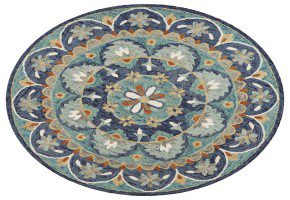 Round Rugs
Round Rugs  Wool Rugs
Wool Rugs  Vintage Rugs
Vintage Rugs 


 Carpet Tiles
Carpet Tiles 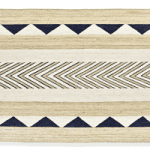 Carpet
Carpet 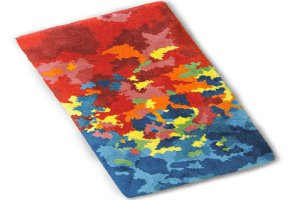
 Embossed Rug
Embossed Rug  Plain Rug
Plain Rug 
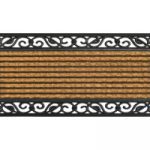 2.5'*4'
2.5'*4'  2'*3'
2'*3'  3'*5'
3'*5'  5*7.5
5*7.5 
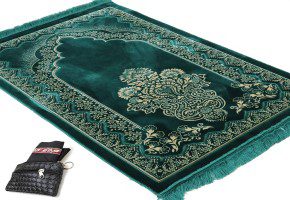












 Artificial Grass
Artificial Grass  Mats
Mats 
 Soil
Soil  Fertilizer
Fertilizer  Pesticides
Pesticides